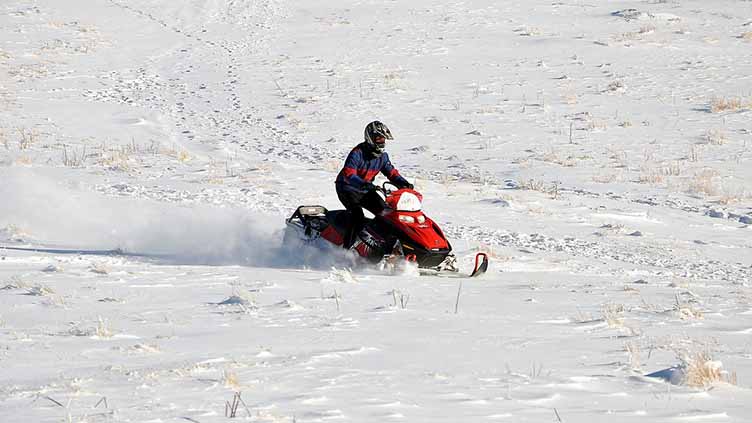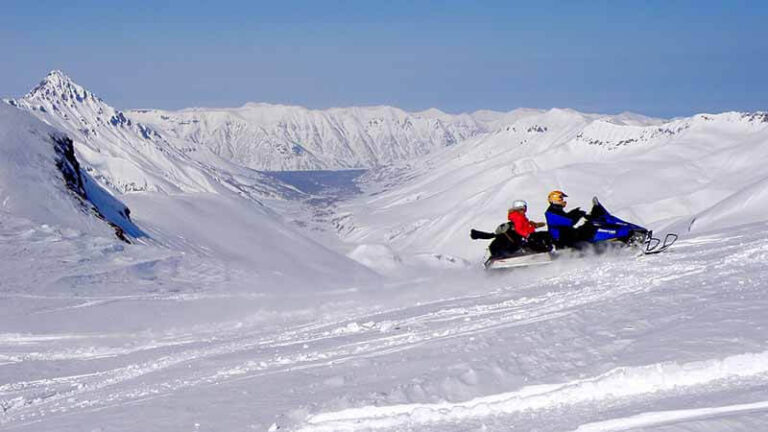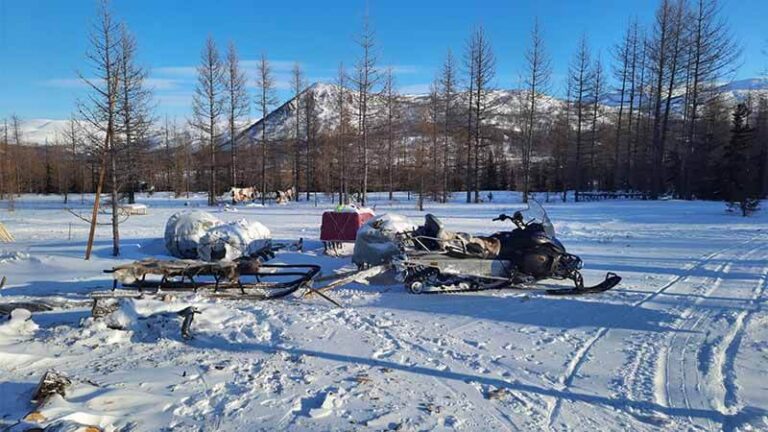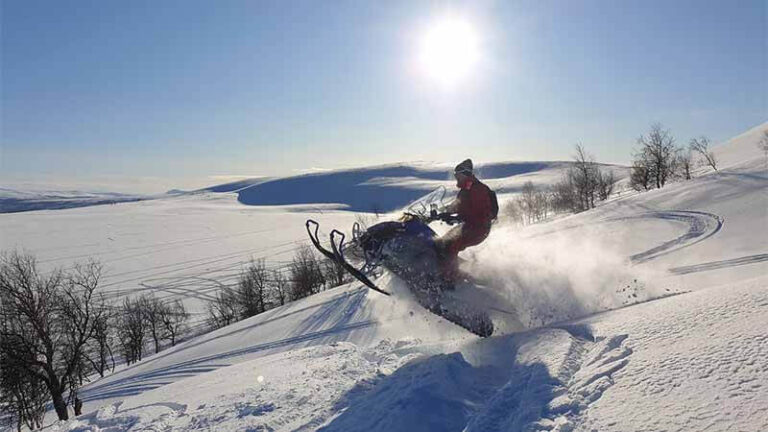How Much Does a Snowmobile Weigh?
Consider the excitement of slicing through fluffy snow, the wind whipping across your face as you traverse the wide winter countryside. Snowmobiling is an exciting and unique pastime that allows riders to explore distant locations and enjoy the beauty of winter like never before. However, in the midst of the excitement, it’s critical to keep one component of snowmobiling in mind: the machine’s weight.
While many enthusiasts are concerned with engine power, speed, and design, understanding a snowmobile’s weight is equally crucial for a really enjoyable and safe riding experience. The weight of a snowmobile plays an important part in its overall functionality, from assuring stability and control to improving performance and even enabling transportation.
This post will go over the different reasons why understanding snowmobile weight is important. We’ll look at how weight impacts trail safety, performance characteristics like acceleration and maneuverability, and even the practicalities of transporting your snowmobile. By learning about the factors that influence snowmobile weight, you’ll be able to make informed selections when choosing the best snowmobile for your needs.
Whether you’re a seasoned snowmobiler or planning your first winter excursion, join us as we explore the significance of snowmobile weight. Discover how one seemingly insignificant feature may transform your snowmobiling experience, allowing you to cut the snow with confidence and relish in the genuine essence of this amazing winter activity.
Why Snowmobile Weight Matters
Snowmobile weight is an important factor that influences many aspects of snowmobiling, including safety, performance, and transportation. Understanding the consequences of snowmobile weight is critical for both experienced riders and first-time riders.
Safety considerations
When it comes to snowmobiling, safety comes first. A snowmobile’s weight is critical to maintaining a safe and stable riding experience. Maintaining control and stability when moving on various types of terrain requires proper weight distribution.
A well-balanced snowmobile with proper weight distribution can give improved traction and grip, lowering the chance of accidents and improving overall safety. A heavier snowmobile also handles tough terrain better, absorbing bumps and reducing the possibility of losing control.
Performance factors
The weight of a snowmobile has a direct impact on its performance characteristics. Acceleration, top speed, and maneuverability are all affected by the machine’s weight. Because of its lower mass, a lighter snowmobile has faster acceleration and higher top speeds.
A heavier snowmobile, on the other hand, may compromise some acceleration and top speed but can give improved stability during high-speed rides. Weight also influences maneuverability, as a lighter snowmobile is more nimble and responsive in tight turns and challenging terrain. Furthermore, weight affects fuel efficiency and range, with lighter snowmobiles often providing better fuel economy and longer riding distances.
Transportation and storage
Transporting a snowmobile can be difficult logistically, especially with bigger versions. The weight of a snowmobile determines how easily it can be loaded and unloaded into trailers or lorries. Heavier snowmobiles may necessitate additional equipment or transporting help.
Furthermore, the weight of a snowmobile must be considered when storing it. Lighter snowmobiles are easier to manage and store in small locations like garages or storage sheds. Understanding the weight of a snowmobile allows riders to efficiently plan and account for these transportation and storage needs.
Factors Affecting Snowmobile Weight
A snowmobile’s weight is determined by numerous major aspects, each of which plays a crucial part in defining its overall mass and performance qualities. Understanding these characteristics enables riders to make educated judgments when choosing a snowmobile that meets their unique needs and preferences.
Chassis and frame materials
The materials used to build a snowmobile’s chassis and frame have a direct impact on its weight. Materials with varied degrees of strength and durability include aluminum, steel, and carbon fiber.
Aluminum, for example, is lightweight and strong, but steel is heavier but more durable and rigid. Carbon fiber, because it is both light and robust, can drastically reduce overall weight. It is critical to understand how the material selection impacts the weight and structural integrity of the snowmobile.
Engine size and type
The size and kind of engine of a snowmobile greatly contribute to its weight. Larger engines with larger power outputs add weight to the machine in general. The additional components required to support the engine’s performance, such as a larger cooling system and a more durable drivetrain, account for the weight increase.
When choosing a snowmobile, riders must evaluate the trade-off between engine size, power, and weight, as larger engines may provide more performance but also increase to the overall weight of the vehicle.
Accessories and additional features
Optional extras and features can add to the overall weight of a snowmobile. Accessories such as heated seats, cargo racks, and storage compartments add convenience and bulk to the machine. Riders must evaluate the utility of these characteristics according to their riding preferences and intended use. While many extras may improve the snowmobiling experience, riders should carefully examine if the advantages outweigh the additional weight.
Riders may make informed judgments when selecting a snowmobile that matches their unique requirements if they understand the elements impacting snowmobile weight. Riders can achieve a balance between performance, weight, and desired features by taking into account the materials used in construction, engine size and type, and the inclusion of optional equipment. Finding the proper balance, in the end, ensures an excellent riding experience adapted to individual preferences and demands.
Typical Snowmobile Weights
The weight of a snowmobile varies based on the category, model, and brand. While it is difficult to provide exact weight estimates for every snowmobile on the market, we can discuss average weight ranges for several categories and highlight variances within those categories.
Range of average snowmobile weights for different categories
- Utility snowmobiles: Utility snowmobiles are built for towing, hauling, and other work-related duties. Utility snowmobiles typically weigh between 500 and 800 pounds (227 to 363 kg). These snowmobiles are more durable and may have increased load capacity, which contributes to their heavier weight.
- Trail snowmobiles: Trail snowmobiles are designed for riding on groomed trails and offer a good mix of performance and comfort. Trail snowmobiles typically weigh between 450 and 600 pounds (204 and 272 kg). Because of their reduced weight, they have better agility and handling on groomed trails, giving in a more enjoyable riding experience.
- Mountain snowmobiles: Mountain snowmobiles are built for deep snow and challenging mountain terrain. Mountain snowmobiles are heavier than other categories due to their unique features and strengthened construction. They can weigh up to 500 pounds (227 kilograms) and provide the essential stability and traction for climbing steep slopes and deep powder.
- Performance snowmobiles: These machines are designed for speed and adrenaline-fueled riding. Lightweight construction is generally prioritized in these snowmobiles to optimize agility and acceleration. Performance snowmobiles typically weigh between 400 and 550 pounds (181 and 249 kilograms), allowing for rapid acceleration and great handling.
Variations in weight within categories
It is crucial to remember that weight might vary between models or brands within each category. Manufacturers use a variety of technical techniques, materials, and design philosophies, all of which influence the overall weight of a snowmobile.
Within the trail snowmobile category, for example, certain models may focus on lightweight materials and innovative design, resulting in a reduced weight compared to others in the same category.
Notable exceptions in snowmobile weight
While average weight ranges are a good starting point, there can be significant differences or exceptions in snowmobile weight. Specialized or limited-edition models, for example, may include sophisticated materials or unique features that affect overall weight.
Furthermore, technological breakthroughs and design innovation might result in subsequent models being lighter than their predecessors, even within the same category.
Conclusion
Understanding a snowmobile’s weight is critical for delivering a safe, high-performance, and practical riding experience. Throughout this blog article, we’ve discussed why snowmobile weight is important, including its impact on safety, performance, and transportation.
Weight has a direct impact on snowmobile safety by impacting stability and control. Proper weight distribution improves traction, lowering the danger of an accident. A larger snowmobile can also manage tough terrain with more stability, giving riders more confidence and lowering the likelihood of catastrophes.
Furthermore, snowmobile weight influences performance variables such as acceleration, speed, maneuverability, fuel efficiency, and range. Understanding how weight influences these factors enables riders to choose a snowmobile that matches their desired level of performance, whether it’s lightning-fast acceleration or optimal fuel efficiency for lengthy trips.
The weight of a snowmobile is also important for transportation and storage. Heavy snowmobiles can be difficult to transport, but lightweight versions are easy to put onto trailers or vehicles. The weight of a snowmobile can also have an impact on storage factors such as garage space or storage shed limits.
When selecting a snowmobile based on its weight, readers must consider their unique demands and preferences. Every rider has different needs and riding styles, and finding a snowmobile that fits those needs can considerably improve the overall experience. Riders can make an informed decision that is well-suited to their specific needs by considering elements such as terrain, riding conditions, desired performance, and storage limits.







